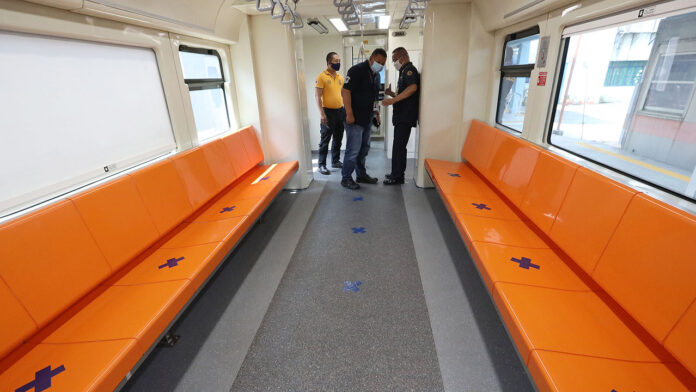The government is undertaking several railway projects to improve accessibility in the country. The photo shows a Philippine National Railways train car. — PHILIPPINE STAR/ EDD GUMBAN
RESIDENTS OF CITIES with planned South Commuter Railway (SCR) stations are expected to have access to over 300,000 additional jobs, as commuting time between Manila and Laguna is shortened, a study by the Asian Development Bank (ADB) showed.
In a study released on Tuesday, the ADB said the 54.6-kilometer (km) railway, which will have 19 stations between Blumentritt in Manila to Calamba in Laguna, could increase the job opportunities by an average of 15.3% for those living in the southern cities and by 8.5% for those residing in Metro Manila.
“The SCR will pass through five cities in Laguna, and five cities in Metro Manila. Each city will have at least one or two SCR stations.
“The completion of the SCR, together with the NSCRP (North–South Commuter Railway Project) and the existing rail network (Metro Rail Transit and Light Rail Transit), will give access to more jobs and close the gaps in job accessibility for some municipalities in the catchment area. With rail-based transit, commuters from 48 out of 64 municipalities can travel to a wider area within a one-hour window, accessing more job opportunities,” the ADB said in the study.
The ADB noted commuters using the SCR will now have access to a wide range of jobs, which will also have higher pay and more stability.
“The SCR will help mitigate regional income inequality by easing the spatial mismatch between workers and jobs,” it said, as commuters can travel more easily to areas with more jobs.
For instance, the study showed commuters in Makati can access up to 5.4 million jobs, while there are only 31,000 jobs in Nasugbu, Batangas.
It noted that service sector jobs dominate Metro Manila, while manufacturing jobs are mostly found south of the capital. Manufacturing wages in southern cities are also usually lower than wages for both service and manufacturing jobs in Metro Manila, it added.
“The spatial distribution of jobs relative to workers’ place of residence is far from even, resulting in the spatial mismatch between jobs and the labor force and inadequate livelihood options for households in the outskirts of Metro Manila. Household expenditure data suggest that households in the third and fourth income quintile use rail the most as a form of transport, suggesting that the immediate beneficiaries of the SCR are those in the middle- to upper- middle-income groups and skilled workers,” the ADB said.
The multilateral agency said the benefits of the new railway are likely to go beyond increased job accessibility, as the study does not consider the overall impact of other rail expansion projects.
The ADB is scheduled to approve a $1.75-billion loan for the south rail project by the fourth quarter of the year.
This is part of the North–South Railway Project of the government that spans 163 kms connecting Clark, Pampanga, Metro Manila, and Calamba, Laguna. This bigger railway line was co-financed by the ADB and Japan International Cooperation Agency (JICA), and will have 37 stations and 464 train cars or 58 trains sets, including airport express trains. — B.M. Laforga

